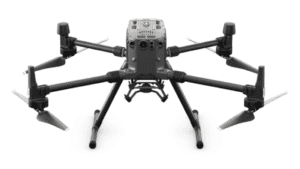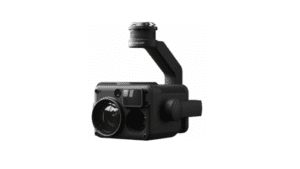As we know, in the realm of search and rescue operations, every second counts. Luckily, the emergence of drone technology has dramatically transformed how these operations are conducted. It allows for quicker response times, enhanced situational awareness, and increased efficiency. Nowadays, one of the most significant advancements in this domain is using docked drones, also known as drone-in-a-box systems. These cutting-edge solutions have proven to be a game changers for rescue units, effectively offering a plethora of advantages that significantly improve the outcomes of critical missions. In this article, we will therefore explore five key reasons why docked drones are revolutionizing search and rescue operations across the globe.
1 Swift Deployment in Search and Rescue Emergencies
Time is of the essence in search and rescue missions, where lives hang in the balance. Therefore, docked drones provide a rapid response solution that can be deployed almost instantaneously. Unlike traditional drones that require manual setup and piloting, docked drones are stationed in a ready-to-fly state. When an emergency call comes in, these drones launch within seconds. The can cover ground quickly to locate missing persons, assess disaster-stricken areas, or survey hazardous environments. Quintessentially, this agility in deployment can be a literal lifesaver. It counts especially in situations where access might be restricted or dangerous for human responders.
2 Continuous Monitoring and Extended Flight Time
One of the limitations of conventional drones is their limited battery life. It can hinder their effectiveness in prolonged search and rescue missions. Docked drones overcome this challenge by enabling automated takeoffs, flights, and landings from a docking station. This feature allows them to return to their station for charging or battery replacement, extending their operational window. Continuous monitoring becomes feasible as these drocan alternate between missions and recharge cycles. This extended flight time is crucial for covering large areas, tracking moving targets, and providing ongoing support to rescue teams.
3 Autonomous Operations and Data Collection
Thirdly, Docked drones are designed to operate autonomously, reducing the need for constant human supervision. This autonomy extends to both flight operations and data collection. These systems can follow predefined flight paths, scan designated areas, and capture images or videos of interest. They transmit their data in real time to the rescue command center, providing rescuers with vital information to make informed decisions. The ability to gather data without requiring continuous piloting not only saves manpower but also enhances accuracy and efficiency in search efforts.
4 Adaptability to Challenging Environments
Search and rescue operations often take place in diverse and challenging environments, including rough terrains, dense forests, and disaster-stricken urban areas. Docked drones can handle these conditions. Equipped with obstacle avoidance technology and advanced sensors, they can navigate through tight spaces, assess structural stability of buildings, and traverse areas that might be unsafe for ground teams. This adaptability ensures that rescue units have eyes in the sky even in the most complex scenarios.
5 Collaborative and Multi-Functional Approach
Lastly, docked drones are not standalone entities; they integrate into a comprehensive search and rescue strategy. These systems can work in tandem with other drones, ground units, and human responders, creating a multi-faceted approach to rescue operations. While some drones focus on locating survivors from the air, others can provide communication relays, deliver supplies, or even act as remote-controlled vehicles for more intricate tasks. This collaborative approach optimizes resource allocation and increases the chances of a successful outcome.
In the world of search and rescue, innovation plays a pivotal role in saving lives. Docked drones, or drone-in-a-box systems, represent a transformative leap in this field. Their rapid deployment, extended flight times, autonomous operations, adaptability, and collaborative nature make them a game changer for rescue units worldwide. As technology continues to advance, these systems hold the promise of further enhancing the efficiency and effectiveness of search and rescue operations, ensuring that those in need receive timely assistance, even in the most challenging circumstances.






